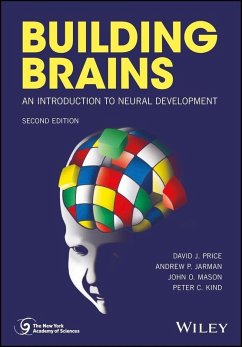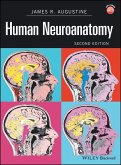Provides a highly visual, readily accessible introduction to the main events that occur during neural development and their mechanisms Building Brains: An Introduction to Neural Development, 2nd Edition describes how brains construct themselves, from simple beginnings in the early embryo to become the most complex living structures on the planet. It explains how cells first become neural, how their proliferation is controlled, what regulates the types of neural cells they become, how neurons connect to each other, how these connections are later refined under the influence of neural activity, and why some neurons normally die. This student-friendly guide stresses and justifies the generally-held belief that a greater knowledge of how nervous systems construct themselves will help us find new ways of treating diseases of the nervous system that are thought to originate from faulty development, such as autism spectrum disorders, epilepsy, and schizophrenia. * A concise, illustrated guide focusing on core elements and emphasizing common principles of developmental mechanisms, supplemented by suggestions for further reading * Text boxes provide detail on major advances, issues of particular uncertainty or controversy, and examples of human diseases that result from abnormal development * Introduces the methods for studying neural development, allowing the reader to understand the main evidence underlying research advances * Offers a balanced mammalian/non-mammalian perspective (and emphasizes mechanisms that are conserved across species), drawing on examples from model organisms like the fruit fly, nematode worm, frog, zebrafish, chick, mouse and human * Associated Website includes all the figures from the textbook and explanatory movies Filled with full-colorartwork that reinforces important concepts; an extensive glossary and definitions that help readers from different backgrounds; and chapter summaries that stress important points and aid revision, Building Brains: An Introduction to Neural Development, 2nd Edition is perfect for undergraduate students and postgraduates who may not have a background in neuroscience and/or molecular genetics. "This elegant book ranges with ease and authority over the vast field of developmental neuroscience. This excellent textbook should be on the shelf of every neuroscientist, as well as on the reading list of every neuroscience student." --Sir Colin Blakemore, Oxford University "With an extensive use of clear and colorful illustrations, this book makes accessible to undergraduates the beauty and complexity of neural development. The book fills a void in undergraduate neuroscience curricula." --Professor Mark Bear, Picower Institute, MIT. Highly Commended, British Medical Association Medical Book Awards 2012 Published with the New York Academy of Sciences
Dieser Download kann aus rechtlichen Gründen nur mit Rechnungsadresse in A, B, BG, CY, CZ, D, DK, EW, E, FIN, F, GR, HR, H, IRL, I, LT, L, LR, M, NL, PL, P, R, S, SLO, SK ausgeliefert werden.









